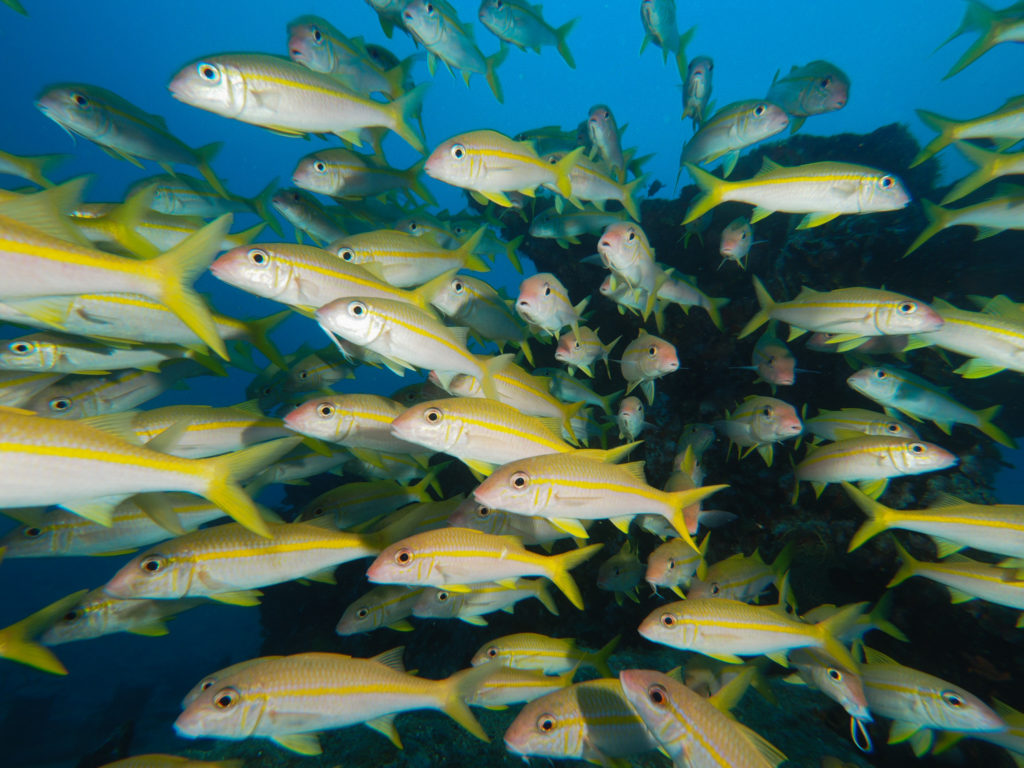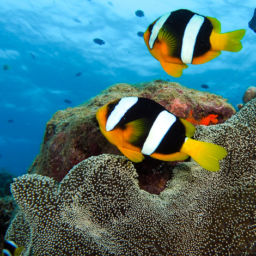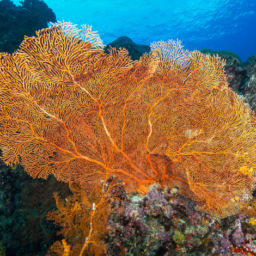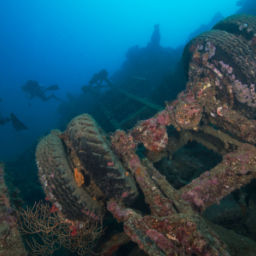If you are going to Vanuatu for a dive vacation, you’ll almost certainly end up on Santo Island (Espiritu Santo), diving the wreck of the famed SS President Coolidge. With wreck depths between 70 feet (21 m) and 240 feet (73 m), the island’s main attraction is a tec diver’s paradise. But crystalline waters and colorful coral reefs mean there’s more to diving in Santo Island than just the Coolidge. Following are a few other fantastic dive opportunities on Santo Island.
 The USS Tucker
The USS Tucker
As it was entering the Espiritu Santo harbor in 1942, the U.S. Navy destroyer USS Tucker hit a friendly mine, unaware of the mine fields’ presence. As a result, the ship was split almost in two down the middle, killing three crewmembers instantly. Although the rest of the crew survived, the ship sank in two distinct pieces, such that divers could mistake the ship for two different wrecks. Situated in 60 feet (18 m) of water, the dive site is suitable for all divers. The bow of the Tucker is in great condition, and while you unfortunately can’t penetrate this section, it’s still reminiscent of the ship’s former shape and size.
After exploring the bow, make your way to the remnants of the stern, approximately 100 feet (30 m) away by weaving between pieces of rusted wreckage and the fish that live there. Here the dive really becomes spectacular. The stern is in a hundred different pieces and scattered across a large area. You can penetrate sections of the bridge, which lie scattered among old doors and corridors, creating amazing swim-throughs. The engine block is easily recognizable and slightly larger than a small truck, making for a great photo opportunity. Fish life is abundant on the wreck, and more than once you will pass through an old ship hallway lying open in the sand, only to come face-to-face with a large cod or moray eel. While not nearly as big as the Coolidge, the Tucker is nonetheless well worth a dive or two.
Fan diving
Scuba divers all over the world love gorgonian fans. These delicate, complex structures can vary from the size of your hand to over 6 feet (2 m) across. In Santo Island, fans reside mostly beneath 60 feet (18 m) and are the largest at around 100 feet (30 m), where they are deep enough to avoid storm damage but still capture enough sunlight to grow to a huge size. Growing on drop-offs or slopes where the passing current brings plenty of nutrients flying by, the sloping bottom of the islands around Santo makes it a fantastic place to find them.
Tuna diving
If you’re diving in Santo when the ocean conditions are most favorable, you may see some huge apex predators. Large tuna use the outer islands and reefs as hunting grounds, and they can be a common site around the lesser-dived sites of Santo. The locals have excellent knowledge on how to find these huge tuna, as they are one of the islands’ primary food sources. The outer reefs are also teeming with coral and sea life, offering an excellent opportunity to spot turtles and sharks, which may not venture into the calmer and more confined waters between the islands, where most of the local diving takes place.
Logistics
Vanuatu is a five-hour flight from Sydney, Australia or eight hours via the Philippines. As a hub for travel to lesser-known Pacific nations, flights in and out are quite regular. There are plenty of dive operators and most are quite organized. Book dives in advance, especially for the Coolidge.





